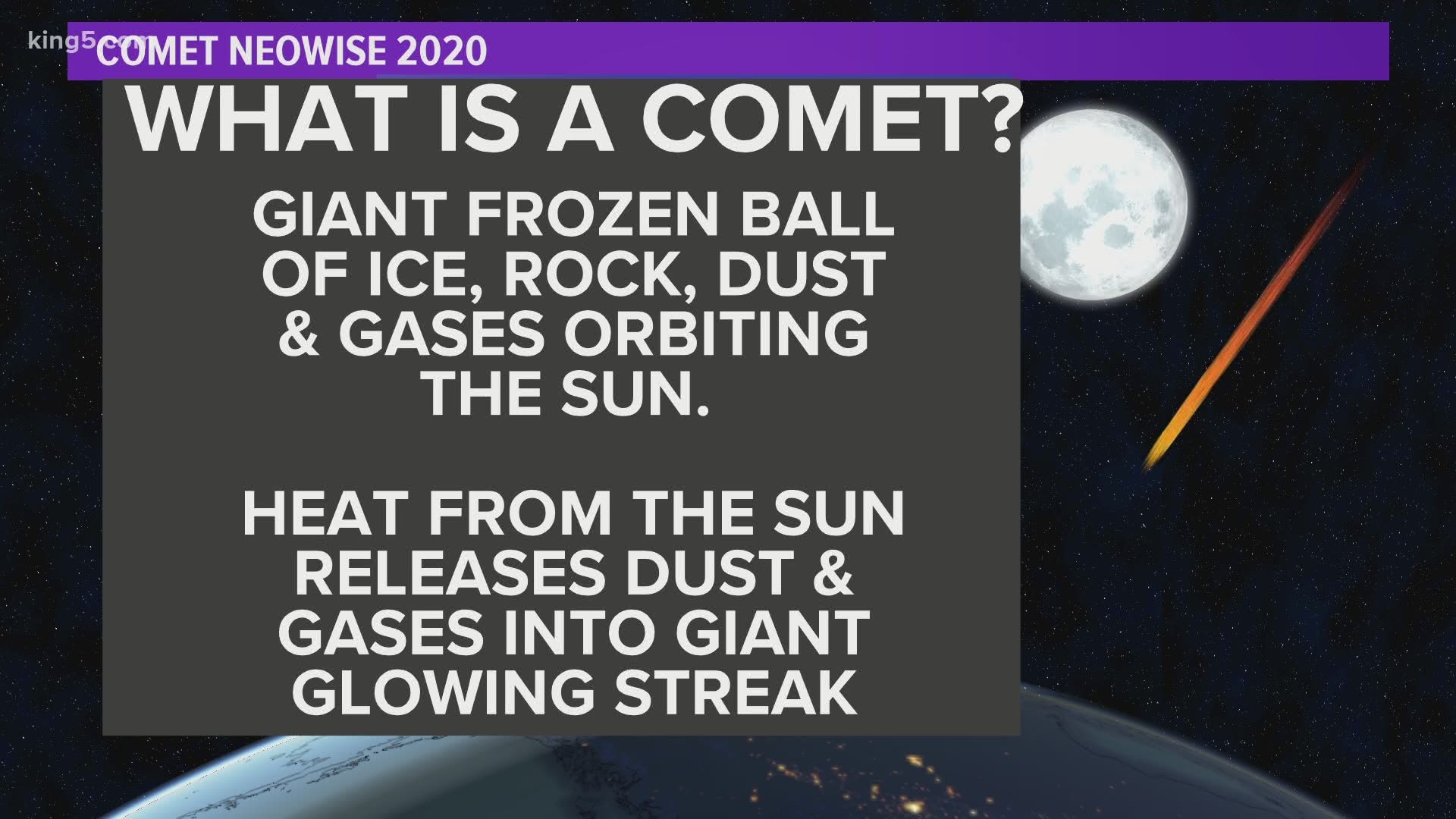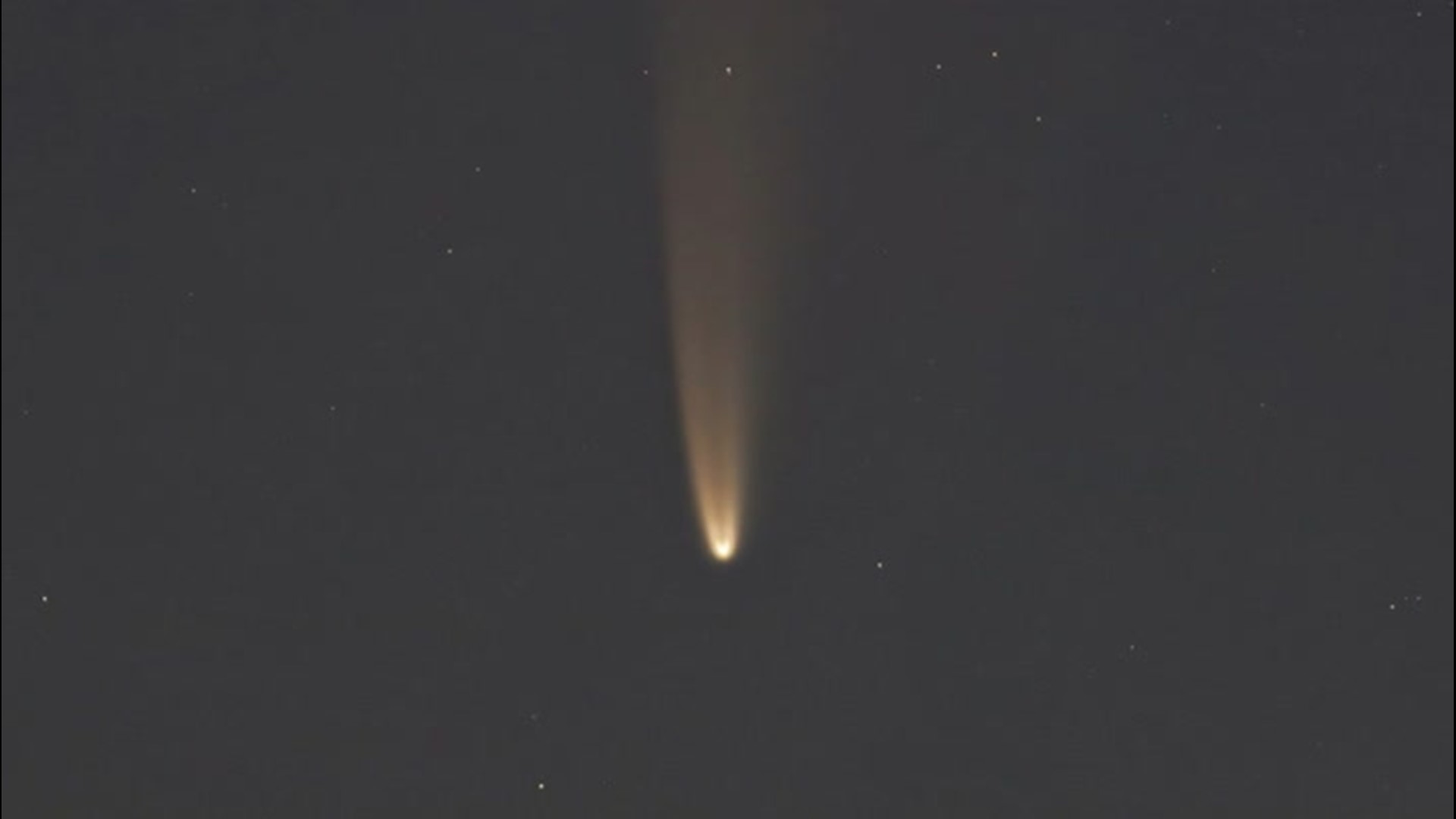SEATTLE — A comet that wowed stargazers all July long will be closest to Earth Wednesday night.
The comet, officially named C/2020 F3 NEOWISE, will pass at a distance of 64 million miles away.
Comet NEOWISE was first seen in early July just before dawn. Several pictures posted on Twitter confirmed that you can see the comet with the naked eye in the U.S.
The National Weather Service Seattle tweeted photos of the comment seen in the sky above Seattle on July 8.
How can you see it?
Comet NEOWISE is best viewed between 4 and 4:15 a.m. low in the northeastern sky. Venus is due East and should act as a reference point as the comet will be at about the same height. It's currently in the constellation Auriga, its brighter star Capella will also be in the northeast, above the location of the comet.
The light of the comet will compete with the brightening pre-dawn skies each morning. While visible with the naked eye in ideal conditions, a pair of binoculars will make it easier to see the distinguishing features, notably the "tail" which will extend upwards from the comet.
Comets are like giant snowballs of gas, dust, rock and ice. Comets in our solar system orbit the sun just like anything else, but usually their orbits are highly elliptical.
They'll spend most of their lifetimes in the outer belts of the solar system. But as they approach the sun, the solar winds heat up the comet and cause some of the dust and debris to glow and become ejected from the comet itself. That's what causes the tail.
Speaking of the comet tail, did you know that the tail will always point away from the sun, due to the solar winds. The tail doesn't follow the path or orbit of the comet itself.
Comet NEOWISE may be visible through the month of July. Each night, the comet's position will move slightly north in the sky and be visible earlier and earlier in the morning. But as the comet moves away from the Sun, its luminosity will start to diminish.


